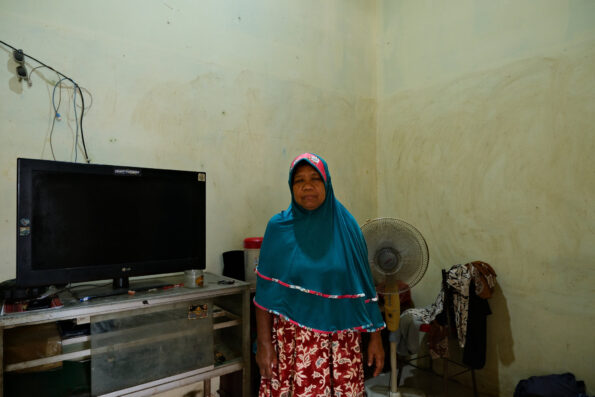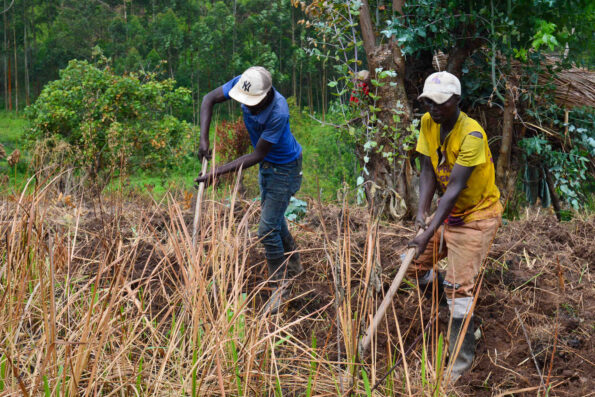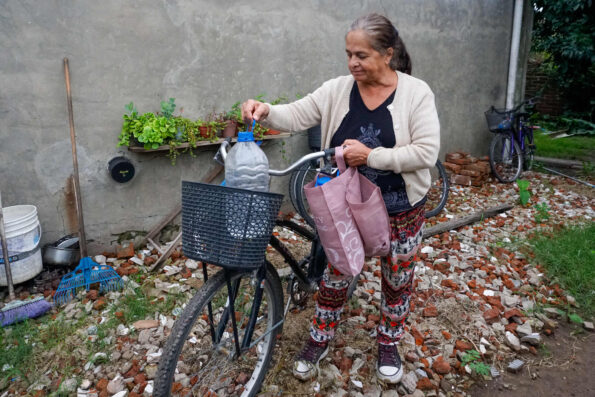
Kalpana Khanal, GPJ Nepal
Farmers carry fertilizer at the Dry Fruit Development Center, which each year generates nearly 1 million Nepalese rupees ($9,565) in sales.
BAITADI, NEPAL — For 40 years, Ganesh Datta Bhatta has lived and worked as a farmer in the Dasharathchand municipality in Nepal’s western Baitadi district.
His home and his walnut and almond nursery sit on a hill that, 20 years ago, used to be covered in snow at this time of year. Up to five feet of snow would fall between December and February.
Farmers would use melted snow and ice to water their cattle and their crops. Those crops included apples, which were sometimes exported to India.
Many farmers, including Bhatta, can no longer grow apples.
“The weather is not like it used to be earlier, so I have changed my farming practices,” he says.
Bhatta says he is now fortunate to be able to produce lemons, walnuts and almonds.



Rural farming businesses are folding as temperatures rise across Nepal. While a government training program is helping some farmers to grow crops better suited to changing climatic conditions in their communities, local experts say national policies and longer-term solutions are needed to make the country’s agricultural sector climate-resilient.
Globally, population growth is leading to higher food demand. While enough food is produced across the world to feed the global population, experts warn that many could be left without food if production does not increase.
But climate change is limiting food production options for farmers globally. In Nepal, which was one of 195 countries that signed the 2015 Paris Agreement to control global warming, some farmers say shifting weather patterns prevent them from growing indigenous crops.
In a 2016 government survey on climate change, 86 percent of surveyed households reported experiencing drought as a result of climate change in the past 25 years, while nearly 85 percent experienced up to four-week delays in the arrival of the monsoon season, which typically starts in June and ends in August.
Over the past 25 years, some Nepalese farmers have increased their use of inorganic fertilizers to cope with climate change, according to the report. But experts say such coping strategies are unsustainable.
Officials from the government’s Fruit Development Directorate, a division of the Ministry of Agricultural, Land Management and Cooperatives, are training farmers in 22 districts on how to increase crop yields and cultivate crops well-suited to the climate in each of the districts, says Ramita Manandhar, program director. The training, which has been offered for a decade, is held once a year, she says.
Trained farmers are growing lemons, almonds, walnuts and olives, among other crops, across 21 privately owned farms and nurseries. The government also employs 15 trained farmers to grow 13 different fruits on a 72-acre farm in the Baitadi district, says Laxmi Datta Pandey, horticulture development officer at the Dry Fruit Development Center, the training arm of the directorate. The farm annually generates nearly 1 million Nepalese rupees ($9,565) in sales, Pandey says.
Draupati Pandey, a farmer living in the Dasharathchand municipality, says she works on the government-owned farm and earns 400 rupees ($3.82) a day.
Before she started working on the farm in 2008, Draupati Pandey says she only produced enough crops to feed her family of six, due to weather changes and low-quality soil.



Bhatta, the farmer who also lives in Dasharathchand, opened his nursery in 2008 when the training first began. He says he earns up to 400,000 rupees ($3,825) a month from selling lemons, walnuts and almonds to buyers, including the Fruit Development Directorate and farmers in other districts.
But not all farmers have received training, says Birendra Bhatta, a farmer who lives in Shreekot, a village in the Baitadi district. Some rural farmers are leaving the country to seek employment as a result, he says.
“Farmers will continue facing the consequence of climate change until the program targeted at farmers in rural villages is brought,” he says.
Laxmi Pandey says the government’s training program is still expanding to different parts of the country.
Still, some say that changing the types of crops farmers grow is merely a short-term coping strategy.
Due to climate change, over 5,000 sources of water across the country have dried up. Irrigation technologies are out of reach in some communities, forcing farmers to rely on rain, which can be irregular, says Ang Tshering Sherpa, chairman of the Climate Alliance of Himalayan Communities.
Short-term measures focused on adapting to changes should be supplemented with national policies that promote pollution-free industries to better control global warming, says Kushal Gurung, chief executive officer of Wind Power Nepal.
Sagar Ghimire, GPJ, translated this article from Nepali.
Laxmi Datta Pandey and Draupati Pandey are not related. Ganesh Datta Bhatta and Birendra Bhatta are not related.







